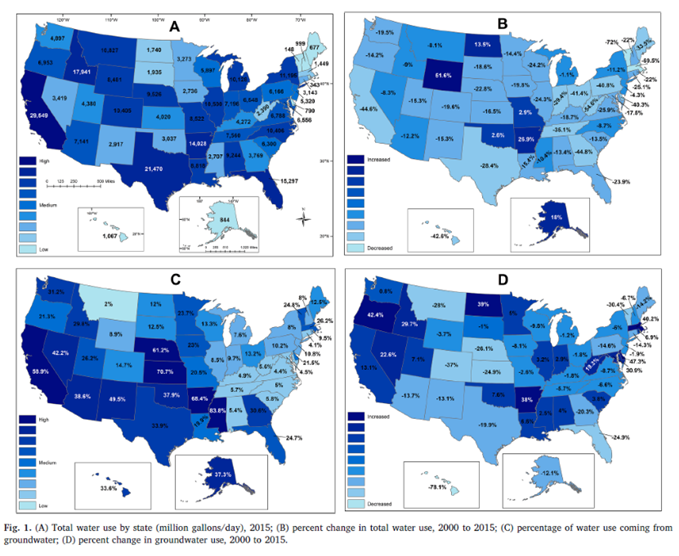A Successful Inaugural Year for Natural Capital Accounting in the United States | OSTP | The White House
A Successful Inaugural Year for Natural Capital Accounting in the United States | OSTP The White House


The Importance of Sustainable Development Goals (SDGs) in Protecting and Conserving Natural Resources
By Emily Pindilli, Jane Lubchenco, and Sol Hsiang, Office of Science and Technology Policy Climate and Environment Team
Introduction
The U.S. economy and our environment are deeply intertwined. A strong economy relies on a stable climate, clean air and water, and the many other benefits that nature provides. On his first week in office, President Biden issued an Executive Order to protect and conserve by 2030 at least 30% of the lands and waters that support and sustain our nation. This is critical to safeguarding the natural resources that all Americans rely on for food, shelter, livelihood, and well-being. The loss of ecosystems, through climate change and overuse, negatively impact our country’s economic growth, sustainability, and resilience. To date, the Biden-Harris Administration has delivered on the most ambitious agenda in history to protect more than 21 million acres of public lands and waters, which contain an abundance of U.S. natural capital, a critical source of our nation’s enduring wealth.
The U.S. National Strategy to Develop Statistics for Environmental-Economic Decisions
In January 2023, the White House released the first-ever U.S. National Strategy to Develop Statistics for Environmental-Economic Decisions (National Strategy). It creates a system to account for our natural assets—including the minerals that power our tech economy, the ocean and rivers that support our fishing industry, and the forests that clean our air. The Statistics for Environmental-Economic Decisions (SEED) will quantify the economic value of this natural capital, providing critical data to help us monitor changes in the condition and economic value of land, water, air, and other natural assets.
Pilot Natural Capital Accounts
Since the release of the National Strategy, the Biden-Harris Administration has developed pilot natural capital accounts as part of a multi-agency SEED initiative. The pilot accounts rely on existing data to estimate quantities, and in some cases values, of natural capital assets. Pilot accounts demonstrate the feasibility of developing natural capital accounts in the United States, while also identifying key challenges to overcome on the path toward regular production of these statistics. Here we share progress and preliminary results on four of the Phase I natural capital account pilots: land, water, air emissions, and environmental activities.
Pilot National Land Account
The United States has 2.3 billion acres of land on which we grow food; we build homes, schools, and hospitals; we produce energy and minerals; wildlife flourishes; and families hike, camp, and enjoy nature. The Pilot National Land Account aims to measure the value of land in official U.S. economic statistics.

This figure from the pilot land account plots the main economic activity in each location, based on the North American Industry Classification System (NAICS). This effort also provides the first estimate for the total value of land in the contiguous United States, using a consistent method across land-use types. Private land in the contiguous 48 states was valued at $32 trillion, equivalent to roughly 30% of the net wealth already measured in U.S. accounts. Accounting for natural assets like land on our nation’s balance sheet is critical; omitting them would dramatically understate U.S. wealth.
Pilot National Water Account
Americans rely on water for a variety of uses, including drinking, washing, cooking, agricultural irrigation, energy production, mining, and recreation. The water pilot account leverages existing data to quantify water availability and use in the United States by industry. When scaled nationally, this account will track water quantity and quality, which influence availability and cost. The team developing the pilot has already demonstrated how to compute water quality and water emissions for the nation.

This figure from the pilot account maps the volume of water used, changes in use, the proportion of use from groundwater, and the change in that proportion by state.
Pilot National Air Emissions Account
The Bureau of Economic Analysis developed a pilot account for air emissions. Using existing data, including from the U.S. Environmental Protection Agency’s Natural Greenhouse Gas Inventory, this pilot is the first to measure greenhouse gas emissions associated with specific industries on a national scale. For example,
SDGs, Targets, and Indicators
1. Which SDGs are addressed or connected to the issues highlighted in the article?
- SDG 15: Life on Land
- SDG 6: Clean Water and Sanitation
- SDG 13: Climate Action
- SDG 8: Decent Work and Economic Growth
- SDG 12: Responsible Consumption and Production
The issues highlighted in the article include protecting and conserving lands and waters, measuring the economic value of natural assets, quantifying water availability and use, measuring greenhouse gas emissions, and tracking environmental activities. These issues are directly connected to the Sustainable Development Goals mentioned above.
2. What specific targets under those SDGs can be identified based on the article’s content?
- Target 15.1: By 2020, ensure the conservation, restoration, and sustainable use of terrestrial and inland freshwater ecosystems and their services.
- Target 6.4: By 2030, substantially increase water-use efficiency across all sectors and ensure sustainable withdrawals and supply of freshwater to address water scarcity and substantially reduce the number of people suffering from water scarcity.
- Target 13.2: Integrate climate change measures into national policies, strategies, and planning.
- Target 8.4: Improve progressively, through 2030, global resource efficiency in consumption and production and endeavor to decouple economic growth from environmental degradation.
- Target 12.6: Encourage companies, especially large and transnational companies, to adopt sustainable practices and to integrate sustainability information into their reporting cycle.
These targets align with the issues discussed in the article, such as protecting and conserving ecosystems, ensuring water sustainability, integrating climate change measures, promoting sustainable consumption and production, and encouraging sustainability practices in reporting.
3. Are there any indicators mentioned or implied in the article that can be used to measure progress towards the identified targets?
- Indicator 15.1.1: Forest area as a proportion of total land area
- Indicator 6.4.1: Change in water-use efficiency over time
- Indicator 13.2.1: Number of countries that have integrated climate change into their national policies, strategies, and planning
- Indicator 8.4.1: Material footprint, material footprint per capita, and material footprint per GDP
- Indicator 12.6.1: Number of companies publishing sustainability reports
These indicators can be used to measure progress towards the identified targets. The article mentions efforts to measure the value of land, quantify water availability and use, measure greenhouse gas emissions, and track environmental activities, which align with these indicators.
SDGs, Targets, and Indicators Table
| SDGs | Targets | Indicators |
|---|---|---|
| SDG 15: Life on Land | Target 15.1: By 2020, ensure the conservation, restoration, and sustainable use of terrestrial and inland freshwater ecosystems and their services. | Indicator 15.1.1: Forest area as a proportion of total land area |
| SDG 6: Clean Water and Sanitation | Target 6.4: By 2030, substantially increase water-use efficiency across all sectors and ensure sustainable withdrawals and supply of freshwater to address water scarcity and substantially reduce the number of people suffering from water scarcity. | Indicator 6.4.1: Change in water-use efficiency over time |
| SDG 13: Climate Action | Target 13.2: Integrate climate change measures into national policies, strategies, and planning. | Indicator 13.2.1: Number of countries that have integrated climate change into their national policies, strategies, and planning |
| SDG 8: Decent Work and Economic Growth | Target 8.4: Improve progressively, through 2030, global resource efficiency in consumption and production and endeavor to decouple economic growth from environmental degradation. | Indicator 8.4.1: Material footprint, material footprint per capita, and material footprint per GDP |
| SDG 12: Responsible Consumption and Production | Target 12.6: Encourage companies, especially large and transnational companies, to adopt sustainable practices and to integrate sustainability information into their reporting cycle. | Indicator 12.6.1: Number of companies publishing sustainability reports |
Behold! This splendid article springs forth from the wellspring of knowledge, shaped by a wondrous proprietary AI technology that delved into a vast ocean of data, illuminating the path towards the Sustainable Development Goals. Remember that all rights are reserved by SDG Investors LLC, empowering us to champion progress together.
Source: whitehouse.gov

Join us, as fellow seekers of change, on a transformative journey at https://sdgtalks.ai/welcome, where you can become a member and actively contribute to shaping a brighter future.







